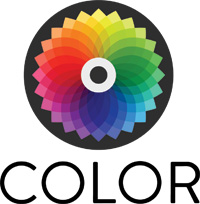Independent bookstores across North America are in trouble. The business model is changing as more and more readers move to tablets and e-readers, with competition from video games and the lure of all that is available on the Internet.
When an independent bookstore finally finds that its business is no longer working, and it announces that it is shutting down, part of any community dies with that bookstore. The death of the local independent bookstore, general or specialized, mom and pop operation or bibliophile specialized, is always news.
My local bookstore in Kitimat is about to close.
It wasn’t the marketplace (as such).
It was murder. Murder most foul. It was killed by Bell Canada.
No, this wasn’t a case of Bell wanting to increase the number of downloads of e-books and magazines on smart phones and tablets. Bell is a big, dumb corporation and the left hand doesn’t talk the to right hand that way.
In Kitimat, the store is Bookmasters/The Source. Now you begin to understand. As well as the local book, magazine, toy and souvenir shop, the store is a Source franchise.
It’s not that this was an unsuccessful franchise. The Source (Bell) Electronics (the corporate entity) last week suddenly cancelled the franchise contracts of 10 small mom and pop, hybrid Source stores across northern British Columbia, putting 10 small businesses out in the cold, out of pure, stupid corporate greed. The Source (Bell) Electronics plans to replace the mom and pop stores with the kind of high pressure sales “full service” stores you see the major metropolitan areas.
So before going back to the issue of the bookstore, let’s look at the decision by Bell’s corporate headquarters and ask, does it even make business sense?
The question that you have to ask up here is: will there be enough business in the small communities of northern BC to sustain a full up The Source with its obnoxious high pressure sales people, most of whom actually know very little about electronics, other than what is some sales manual? Given the uncertain economic conditions here, I doubt very much if a corporate Source store will succeed in the long run. Interestingly The Source is still promoting hybrid stores under The Source Express franchise, so the question is why are they killing the stores in northern BC? Is there any solid business research behind this move? Or it is an ego-trip from corporate?
 There is already talk across northwestern British Columbia of a boycott of the new stores, in protest to this high handed corporate action.
There is already talk across northwestern British Columbia of a boycott of the new stores, in protest to this high handed corporate action.
A boycott might actually succeed. There is, of course, fierce competition in electronic retailing, both from national chains and from locally owned electronic stores. In northwestern BC, there is a decades long tradition of mail order, going to back to the time when there was little available at retail due to relative isolation and transportation problems. Now it is easy to order via Internet or on E-Bay. Almost everyone I know up here provides regular work for Canada Post and FedEx or UPS.
(An aside: When the old Radio Shack stores became The Source in Canada, the electronic parts and gadgets that were once carried by Radio Shack disappeared. When, as a TV news freelancer, I needed some gear, I was told by Bookmasters/The Source that they carried it when they were Radio Shack but it was no longer available via The Source. I bought the gear I needed on E-Bay from California)
Another reason that I am pissed off at this. It is going to cost me money. Bookmasters/The Source carries magazines not available on the racks of Overwaitea or Shoppers Drug Mart. With no bookstore in town, if I want those magazines, which are not available electronically, I am going to have drive 60 kilometres to the next nearest bookstore in Terrace once a month or pay postage fees which, for American magazines, are often higher than the subscription fees.
I found about the store closing on the weekend from a friend, I visited the store today (unfortunately all the bookshelves had already been sold).
Today, the more I think about it, even though it is an example from a small town, Bookmasters could actually be a viable business model to sustain independent bookstores, by combining paper books with electronics.
Yes, I frequently buy e-books from Amazon or Apple for my iPad. I see a review or a mention in a news story or on a website and I can download the book with a click.
When it comes to the simple joy of reading, the trouble with Amazon/Kindle or Apple is that often there is not enough information provided that let’s me decide to buy a book. That’s where browsing the bricks and mortar bookshelves comes in.
Take science fiction, unless I read a review in Analog (which will no longer be available in Kitimat after Bookmasters closes) I can’t tell from the one or two sentences on an e-book page whether or not this book is worth buying. Browsing the small science fiction section in Bookmasters let me look at the cover, look at the blurb at the back, perhaps the first few pages and then decide whether to buy and I often do buy.
The other point about a physical, bricks and mortar bookstore is serendipity. Amazon may have recommendations based on past purchases, but there is no way Amazon can tell that a book I see on a shelf in a store will grab my interest. I seldom leave a bookstore without some serendipitous purchase that would never appear on my Amazon profile.
The book business is increasingly moving toward the electronic. Some bookstores are already selling iPads and Kindles. At the same time, some publishers and business analysts are saying (hoping?) there will still be a demand for a physical book.
It seems to me that if we want the independent bookstore to survive as a viable business model, that there should be serious consideration of a hybrid store that sells both books and electronics. A store could sell either hard copy books or e-books through some sort of download station. That way the customer has a choice. That store could also a sell a selection of tablets and other e-devices, selected software and who knows what is around the corner.
Consider the camera store. In the past decade, the camera store has gone from selling film cameras, film and darkroom equipment (remember darkrooms and chemicals?) to what is essentially an electronics store, selling digital cameras (and camera accessories), software, tablets, memory cards and all kinds of accessories. The old film camera shops that refused to move to electronics are long gone. (But the surviving stores still sell used film cameras to enthusiasts)
Who knows what the future will bring in e-books? The explosion in tablets in the past few months is probably only a hint of things to come. Independent bookstores that stick with the old model will die. But, as I said, communities thrive on bookstores. Independent bookstores have to be on the front lines of e-innovations. Surviving independent bookstores should perhaps start looking to the camera retailer as a possible model for adapting to a fast changing future, just like a camera store does today, selling “content” and “content delivery” in multiple forms, including the good, old-fashioned books first brought to us by Johannes Gutenberg..
So for now, the closing of Bookmasters/The Source in Kitimat will usher in another example of the current corporate monoculture. Bell#FAIL
But perhaps, the silver lining in this cloud (and it is overcast and snowing in Kitimat today) is that the hybrid electronic stores in the small markets of northern BC could be resurrected across the world as way of saving the independent “content” store.
 A combination of photo crowd sourcing and social networking.
A combination of photo crowd sourcing and social networking.
